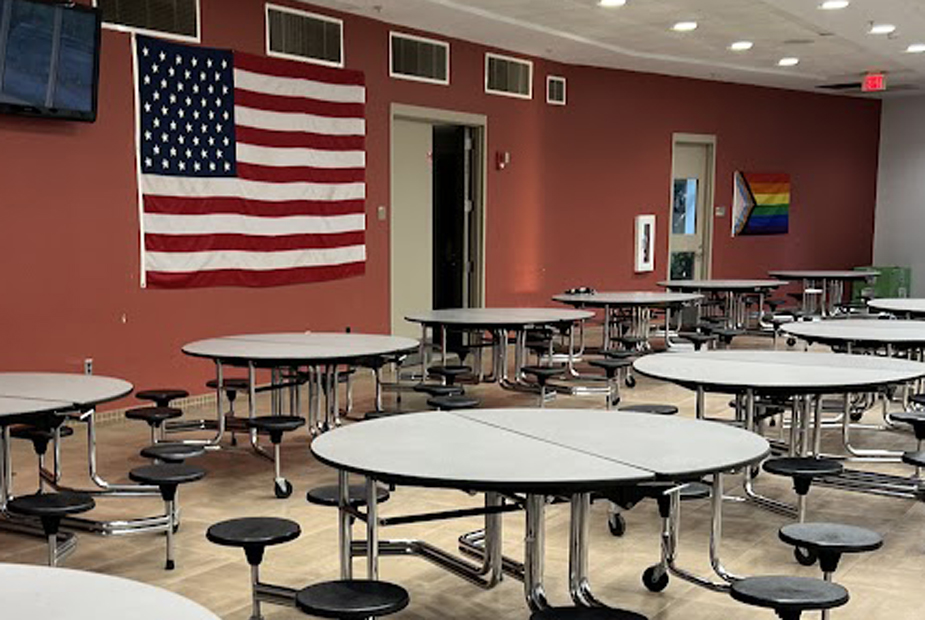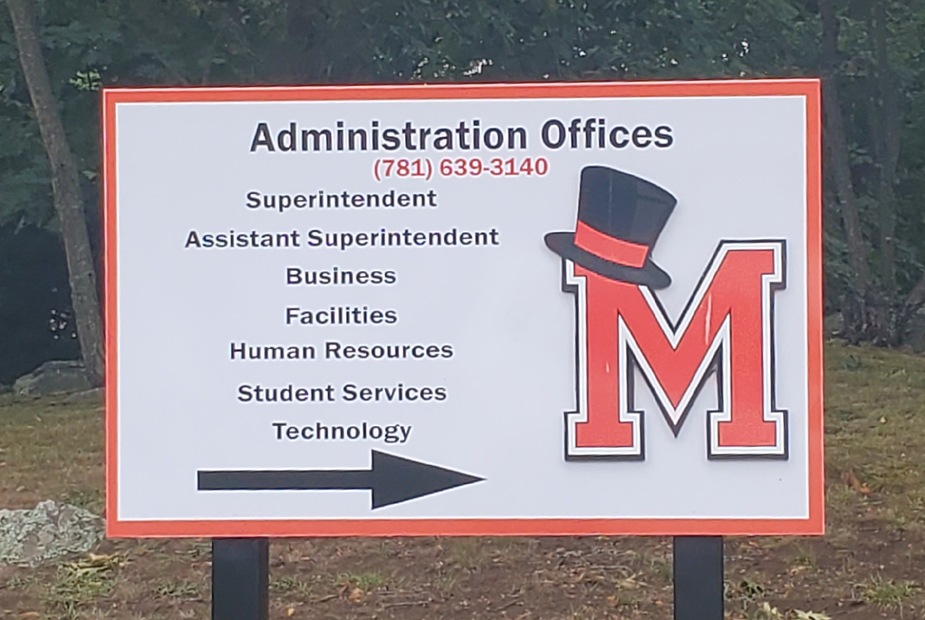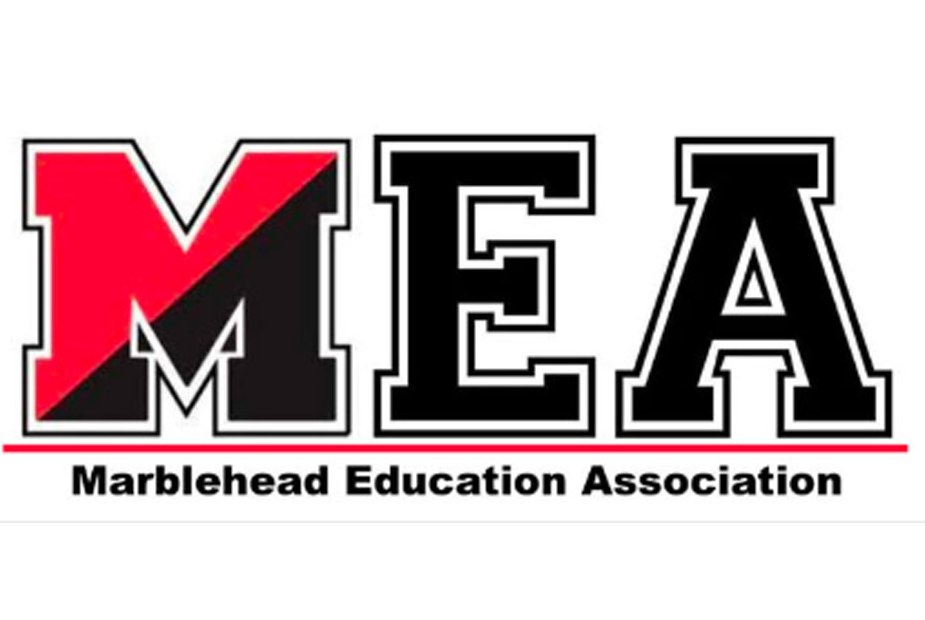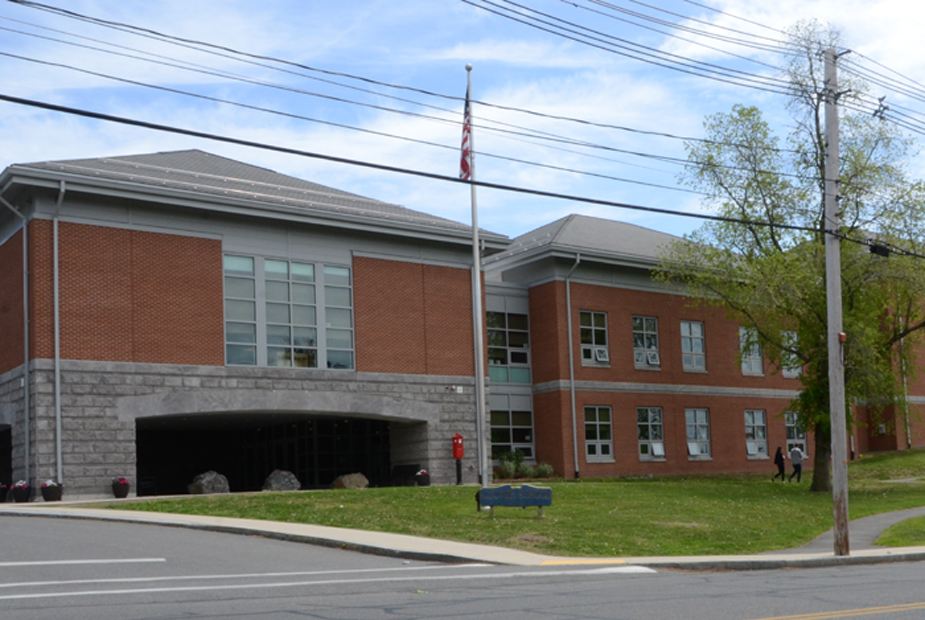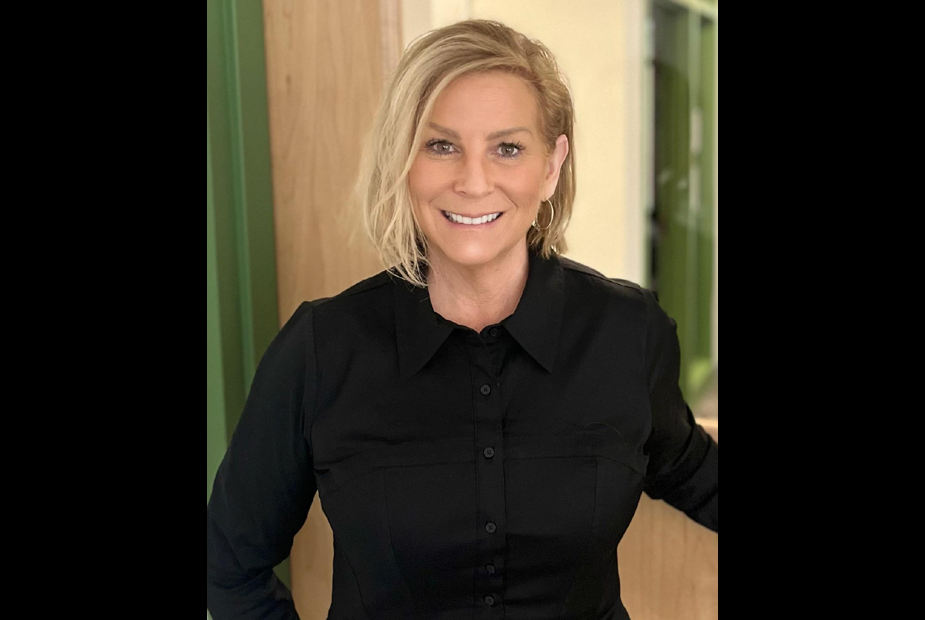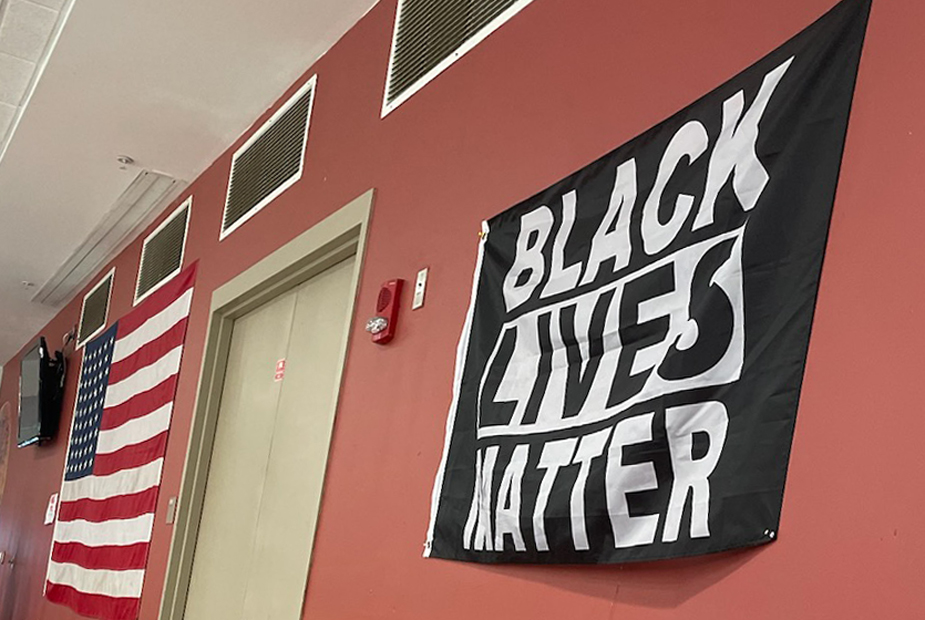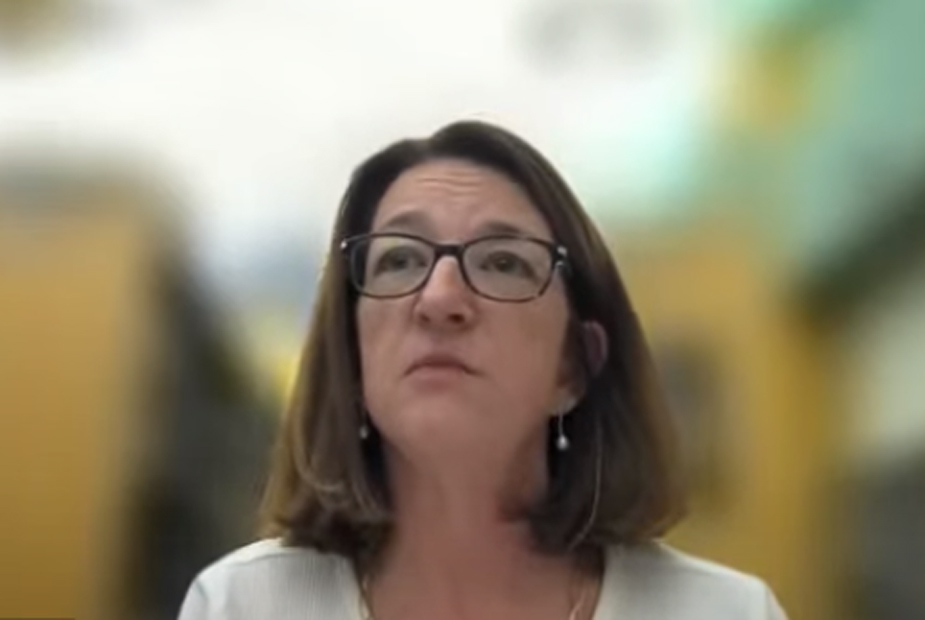Local Parent Explains Why She Took Down a BLM Flag at the High School
By Lena Robinson and Jennifer Lederman
In 2021, a Black Lives Matter (BLM) flag was first put on display in the cafeteria of Marblehead High School. It has remained there ever since, until—just a few weeks ago in mid-October—it was suddenly gone. It reappeared about a week later, and Acting Superintendent of Schools Michelle Cresta attributed the flag’s removal to “an unauthorized individual.” That individual has now stepped forward for an exclusive conversation with Marblehead Beacon.
Sharman Pollender—a Marblehead resident and mother of two—tells Marblehead Beacon that she has been upset about the presence of the flag since it first made its appearance in 2021. “But my tipping point,” she says, was when a student recently told her she felt threatened by the flag. “I didn’t want her to take it down and possibly get in trouble, but how is it that in this world where so many things are considered micro-aggressions, this flag and all it means is left up? So I decided to take it down.” Pollender neatly folded the flag and placed it on a table in the cafeteria.
Pollender has not been shy about expressing her opposition to the BLM flag over the years. As Marblehead Beacon recently reported, she sent a letter to the Marblehead Reporter in May 2021 outlining her concerns and explaining that she had also expressed them in a letter she sent at the time to then-Superintendent John Buckey. “The flag is not merely a statement that black lives do matter, as they most certainly do,” she wrote. “As a person of color myself, and a parent of boys who are POCs, I would be hard-pressed to say my life doesn’t matter. But we do not derive our identity merely from our skin color or heritage, and we do not, contrary to what many think, have a monolithic point of view.”
After the recent attack on Israel by the terrorist organization Hamas (which is the elected leadership of the Palestinians)—an atrocity during which civilians were raped, abused, slaughtered, and kidnapped—Pollender says that she is even more baffled than she was before about the continued presence of the BLM flag at the high school, particularly given the overt celebration or justification of the atrocities by many groups affiliated with the BLM movement. The Chicago chapter of BLM, for example, took to X (formerly Twitter) to post an image in which a Hamas paraglider with a Palestinian flag featured the caption, “I stand with Palestine.” Hamas had used paragliders to fly over the wall separating Gaza and Israel to perpetrate the attack, particularly in the area in which the terrorists murdered several hundred young people attending a music festival. In addition, the Los Angeles chapter of BLM wrote about Hamas on Instagram that “their resistance must not be condemned but understood as a desperate act of self-defense.” The primary Black Lives Matter organization—known as the Black Lives Matter Global Network—has neither supported nor condemned the pro-Hamas statements made by a variety of BLM chapters and other national organizations including Black Lives Matter Grassroots and Black Lives Matter At School.
“I just don’t really understand how after the massacre of more than a thousand Jews a few weeks ago,” she says, “people can watch the reaction or lack thereof by BLM and rush to put it back up.” She also notes that, “The BLM flag didn’t represent me when it weaved political statements about Israel and the Palestinians into the movement. It did not represent me when it refused to disavow violent protests and looting that resulted in the destruction of businesses—including black owned. It didn’t represent me when it was associated with the ‘Defund the Police’ movement, and it does not represent me now that it has stood by silently about the ethnic cleansing that Hamas inflicted on the Jews in their own homes.”
The BLM flag in Marblehead has been the subject of controversy in the past. A petition started by another local resident was circulated in 2021 when the flag first appeared, asking that it be removed because “BLM publicly declared their support for a Palestinian terrorist group known as Hamas who has been shooting rockets into Israeli civilian centers.” While the BLM flag remained in place, an Israeli flag was added nearby for a time, though it has since disappeared, and its current whereabouts are unclear.
Pollender tells Marblehead Beacon that she has lived with her family in Marblehead for 18 years, but it was only a few years ago that she first experienced what she believes are negative race-based sentiments. “I was expected to fall in line with my views as a person of color and support what certain white activists believed,” she says. “Supporting police or not getting behind BLM—those are 100 percent not considered okay by these self-anointed social justice experts.”
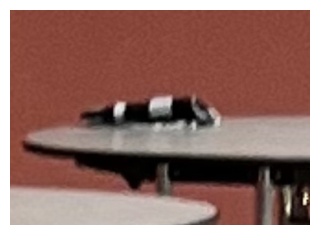
Pollender says that she was aware, when she took down the BLM flag, that she might take some flak for it. “I knew the Israeli flag was gone and no one seemed to care,” she says. “It’s interesting how only certain flags are important.” After she removed the flag, she says, she folded it, placed it on a nearby table, and took a photo with her phone. “I knew that my actions were right there on video because I looked straight at the camera,” she says.
The disappearance and reappearance of the BLM flag has motivated broader community discussions about Marblehead’s flag policy generally. In response to Acting Superintendent Cresta’s request for guidance, the School Committee’s policy subcommittee met online on Friday, October 27, 2023. The recording is available on the School Committee’s YouTube Channel.
Policy subcommittee members Jenn Schaeffner and Alison Taylor started the meeting by inviting public comment, and participants spoke both in favor of and in opposition to the continued display of the BLM flag. Cresta, also in attendance, took the opportunity to caution attendees that the meeting was not about the BLM flag specifically, but rather about the need to establish a policy surrounding the display of flags on school property. Currently the pride flag and the BLM flag are the only two on display at the high school apart from the American flag.
The issue has become particularly pressing not only because of the BLM flag but also as a result of a recent Supreme Court ruling in Shurtleff vs. City of Boston. In that case, the court ruled unanimously that Boston had violated the Constitution when it refused to fly a Christian flag on one of the three flagpoles in front of city hall when it had previously granted similar requests from other private groups.
In the wake of this ruling, a number of Massachusetts communities have made efforts to implement official procedures for deciding which flags can be flown on public property. Schaeffner noted that she had researched some of these policies. The town of Hadley, for example, recently decided to only permit the flying of the American and Massachusetts flags, unless requests are submitted in writing and approved by the School Committee. While noting that the Hadley policy might be useful as a starting point, Schaeffner emphasized that the process would take time and that the School Committee would invite further community feedback. Any new School Committee policy requires at least three readings in public session before a vote can be taken.
As local resident Xhazzie Kindle noted during the public comment period, the School Committee likely has a challenging task ahead. “This is agony for me thinking about what we’re faced with right now with the struggle to acknowledge individuals in our schools, while at the same time protecting free speech, the right to self expression,” she said. “I think no matter what, what you ultimately end up deciding as far as the flag policy, you’re going to make some people very unhappy while others will be relieved.”
Widely divergent opinions were expressed during the meeting. Town resident Mimi Lemay, while acknowledging her disappointment that the national Black Lives Matter organization “has not condemned some of the very openly antisemitic and cruel logos and memes and statements that some of its local affiliates have put out there,” emphasized her belief in the importance of continuing “to display flags that indicate inclusion and safety in response to challenges faced by our students with marginalized identities.” Local Renee Sidman agreed, saying, “as a mother who had a black child in this school system, I have the perspective with my white privilege of knowing what she felt and how she felt perceived here. And it would have been important for her to see the [BLM] flag.”
Pollender also spoke during the policy subcommittee meeting. “I find that flag offensive,” she said. “My children do not define themselves by their skin color. Nor do I. My mother is black. She never taught us to go by our skin color.” Nyla DuBois, also a woman of color, suggested that all of the flags should come down. “There should be one place,” she argued, “where groups don’t really matter. It’s just about who you are as a person.” She went on to suggest that placing flags at the school could become a slippery slope. “First you have the Black Lives Matter flag, then you have the LGBTQ flag…and I know there was an Israeli flag put up…and then maybe there will be a Palestinian flag.” She acknowledged that students should be able to wear a button or an armband to express their personal beliefs but that, at school, it should be “about the kids being able to learn the critical thinking to develop their own voice.”
As the flag policy discussion drew to a close, School Committee member Alison Taylor emphasized the importance of community members continuing to share their perspectives. “We encourage more people to reach out with their thoughts, feelings, etc. We really welcome that,” she said. Cresta and Schaeffner agreed, and Schaeffner took the opportunity to read a prepared statement which said, in part: “A core tenant of inclusion is that we stand for a community where individuals of all identities and backgrounds are appreciated and respected and we recognize our shared humanity. We will strive to treat each other with respect and care, even when we disagree.”
Editor’s note: School Committee member Jenn Schaeffner is a Marblehead Beacon founder and editor. She is recusing herself from Marblehead Beacon’s coverage of the School Committee and anything pertaining to Marblehead Public Schools.

